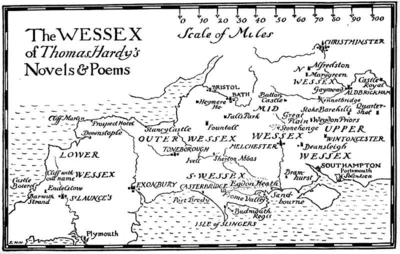British regional literature
John Cowper Powys has been seen as a successor to Thomas Hardy, and Wolf Solent, A Glastonbury Romance (1932), along with Weymouth Sands (1934) and Maiden Castle (1936), are often referred to as his Wessex novels.
"Like [John Cowper] Powys, she found a key to both personal and national identity by tuning into the deep history of the Dorset landscape [with emphasis on] sacred places and folk traditions".
R. D. Blackmore (1825–1900), was one of the most famous English novelists of the second half of the nineteenth century, and he shared with Thomas Hardy a Western England background and a strong sense of regional setting in his works.
Catherine Cookson (1906 – 1998), who wrote about her deprived youth in South Tyneside, County Durham was one United Kingdom's most widely read novelists in the twentieth century.
Sid Chaplin (1916–1986) is another writer from North-east England, who wrote, amongst other things, The Day of the Sardine, published in 1961, which is set in a working-class community in Newcastle upon Tyne, North Tyneside at the very beginning of the 1960s.
[10] He wrote in his Northamptonshire dialect, introducing local words to the literary canon such as "pooty" (snail), "lady-cow" (ladybird), "crizzle" (to crisp) and "throstle" (song thrush).
Basil Bunting's (1900–1985) semi-autobiographal poem Briggflatts can be read as a meditation on the limits of life and a celebration of Northumbrian culture and dialect, as symbolised by events and figures like the doomed Viking King Eric Bloodaxe.


